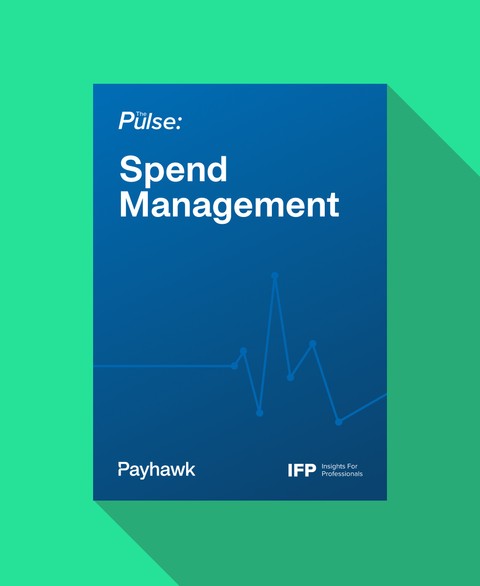
How finance controllers use the power of AI to save time and costs



Can’t escape talk of AI? But not sure how to leverage it and other digital innovations in your finance team? This article digs into the various ways you can perform repetitive tasks and speed up workflows with AI, machine learning, and more.
By submitting this form, you agree to receive emails about our products and services per our Privacy Policy.
In this blog, we cover some of the most talked about innovations in the finance and tech space, including Artificial Intelligence, Machine Learning, and Automation. Here’s what we mean when we talk about each one:
- Artificial Intelligence (AI) refers to the simulation of human intelligence in machines. It involves various methods and technologies to make machines do things that usually need human smarts, like solving problems, understanding and synthesising language, spotting patterns, and making choices. An example of AI in finance would be using an AI camera to automate data capture from receipts.
- Automation means using technology to do things without too much human help. It can involve setting up corporate finance processes, enabling you and your colleagues to save time on manual tasks. You can use automation in your organisation to set custom workflows or instructions to get things done.
- Machine Learning (ML) teaches machines to learn and get better at tasks without direct instructions. It uses algorithms and data to find patterns, predict, or take action — and improves and grows smarter the more information it gets.
When it comes to innovation, AI was one of the biggest 2023 financial technology trends. According to Forbes (via the US International Trade Administration), the UK AI market alone was worth more than £16.9 billion in June 2023 and is expected to grow to £803.7 billion by 2035.
At Payhawk, we're no strangers to innovation. Our corporate cards and expense management solution already make manual tasks fast and accurate for finance teams in over 32+ countries, with features like OCR to automate receipt data capture, custom expense fields, machine-learning-powered suggestions for expense reports, and more. But how do these features help you in practice?
Spend challenges? Learn how companies intend to overcome them.

Four ways digital innovation can help you in your role as finance controller
Real-time reporting using AI-enabled OCR technology
AI can help you get real-time visibility into your organisation's financial data. One application of this is through the use of AI in Optical Character Recognition or OCR. Your colleagues use OCR technology to scan receipts and invoices, and it automatically crops the images, pulls out the correct dates, invoice numbers, vendors, and more. The system then suggests the right cost centre based on your pre-designed custom fields (set around project, initiative, spend type and more).
The power of machine learning also allows the system to get smarter and smarter with its suggestions, meaning the more you use OCR-enabled AI Camera technology, the better the system gets at predicting what expenses you're scanning and where they belong in the company's books.
Howard Thompson, Global Financial Controller at GDS Group, describes the importance of accurate data in analysing project spend across company spend in expense management and ERP solutions.
As we have all of our expenses coded up to project codes in the Payhawk solution, we can now report on our margins by event and so on at the end of each month. Payhawk has done a great job of ensuring that we can get that custom field from NetSuite and the project code from NetSuite into Payhawk.
A faster, more streamlined month-end close process
Month-end close is typically every financial controller's biggest headache, with one of the biggest challenges involving working with inaccurate, disparate, or missing data. If you have to tie together all kinds of Excel sheets, do manual account reconciliations, and use multiple cards, expense management, and ERP systems side by side, you'll spend days and even weeks on month's end. And in the worst-case scenario, closing the month could take so much time you don't have any left to analyse the numbers for opportunities or threats.
But with a complete, global spend management solution like Payhawk, you can keep track of everything you need all in one place, eliminating the need to string together all sorts of Excel sheets. You can also save hours and even days on reconciliation with native integrations to leading ERP or accounting systems, getting complete visibility over spend.
Carolina Einarsson, Finance Director, at Essentia Analytics, explains:
Before Payhawk, we used a couple of point solutions, excel, and a few different credit cards, but we didn't have an all-in-one centralised solution. Moving to Payhawk has been a game-changer for saving time, however: we have even halved our month-end close from ten to just five days.
Automation makes a big difference in speeding up month-end reconciliation. Take sorting corporate expenses with Payhawk, for example; doing it manually eats up lots of time. But with technology to scan invoices, pull out the info, flag for approval (or auto-acceptance), and organise them automatically using custom fields and expense filters, you can save valuable time and avoid human error.
The above means less manual work, better data quality, and more time for analysis. Plus, with native integrations and API, your spending data flows seamlessly into your ERP, following the accrual concept for better accuracy and less hassle for customers.
Automating receipt and invoice chasing
In a report from the Harvard Business Review Analytic Services in collaboration with Payhawk, 67% of all C-level directors said that their team's focus was on chasing receipts and invoices. Meanwhile, 64% of those surveyed indicated that finance teams must work more on "analysing financial data to make recommendations related to the organisation's overarching business model and strategy." These stats speak volumes about the gulf between what finance teams need to do to support strategy and growth and what they get stuck doing to keep the cogs turning.
But there is another way: with Payhawk, in-built automation puts real-time data at your fingertips and makes month-end close faster and easier.
Nick Millard, VP of Finance at GDS Group says:
Since we've implemented Payhawk, the benefits have been enormous. Before Payhawk, it used to be one person's full-time job to chase receipts, code up credit card statements to the P&L and manage the costs and credit cards. Now, however, they have a completely different role and can be proactive, track costs, and get visibility of expenses as they happen. Payhawk has freed us up to look into future spend rather than always reporting on historic spend.
Our solution also automates chasing missing receipts, missing invoice information and more, saving you time from constantly asking colleagues for info, stopping you from being the bad guy on their case, and improving the accuracy and speed of spend visibility.
In-built card controls and approval workflows
At Payhawk, our solution includes corporate cards with built-in spend controls for teams and individuals. Our corporate Visa cards make all transactions instantly visible to the finance team and follow any spending rules set by senior leaders in collaboration with the finance team, like ATM blocks, custom spending limits, and more.
The cardholder pays with the card, takes a picture of the receipt, and uploads it into the user-friendly app, where the receipt data gets pre-filled automatically. The employee then simply chooses a spending category (from a predefined dropdown list)and submits the expense, which is also categorised appropriately into the right project or initiative (defined by the finance team in collaboration with budget owners).
Our automated approval workflows for invoices and 3-way matching for purchase orders support corporate spend control, too. You can use the automations to set limits around approvals and discrepancies, meaning any spend or discrepancies that fall under the limit can be approved automatically. At the same time, any planned spend that goes over gets automatically flagged.


Three ways AI is already helping finance controllers
Now you understand some of the ways that AI in finance can help you in the future in your role as a finance controller, here’s how you can leverage these technologies today:
Use AI as a personal co-pilot
AI is here to stay, and if you fail to embrace it, you could risk being left behind. With AI routinely saving people time and effort, both in and out of work, financial leaders are no different.
For example, AI helps finance controllers manage the following non-finance-specific tasks (and more):
- Automate repetitive financial tasks such as data entry
- Email drafting and editing
- Research market trend insights
- Investigate competitors
- Research investment opportunities
Simplifying risk management with AI
According to the Financial Times, many experts anticipate that AI will play a pivotal role across various parts of risk management in finance over the coming years.
These parts include:
- Assessing Novel Risk Types
- Devising strategies to mitigate these risks
- Accelerating the tasks of risk officers through automation
Supporting with manual finance tasks and data analysis
Where AI is involved, finance professionals are already taking advantage of AI to support report generation, analyse vast data sets, and more — with plenty more opportunities on the horizon.
Meanwhile, when it comes to automation, spend management solutions like ours take manual tasks off your hands, improving accuracy and saving time.
Take Eduardo Felipez, Management Accountant at Heroes, for example, and how he describes the benefits of our automated NetSuite integration:
We have five entities, with approx 300-500 expenses a month in the parent company. It used to take me one whole day per entity to review, import and export and put the expenses in the correct format. With the direct Payhawk integration to NetSuite, I spend just an hour a day on this. It's an enormous help.
Imagine taking one day's work down to just one hour. And think of all the smart, strategic, cost-optimisation initiatives you could work on instead to support business growth and stability.
Next steps: Unleashing the power of AI with Payhawk
In this blog, we told you about the power of AI, how finance managers are using it, and how our own automation-driving, machine-learning-powered spend management software supports finance teams to supercharge their daily work.
Curious about expense management software, removing inaccuracies, getting control and visibility over spend, and seeing how much time it can save you? Book a demo today.
In her role as a Senior Content Manager, Nerissa Goedhart harbours her passion for sharing valuable insights and solutions through engaging content. This, with a clear mission to assist and empower businesses in the region by elevating their expense management.
Related Articles


Practical spend management guide for mid-market CFOs and finance leaders

